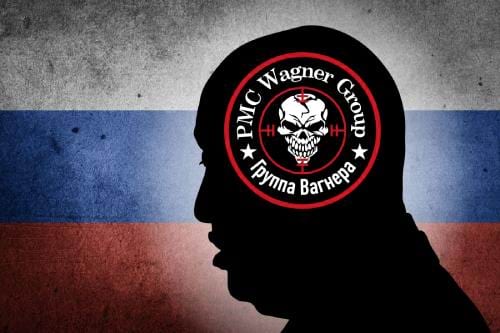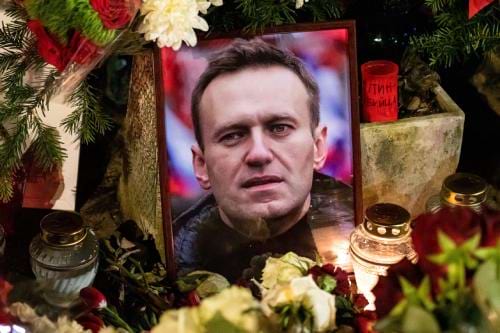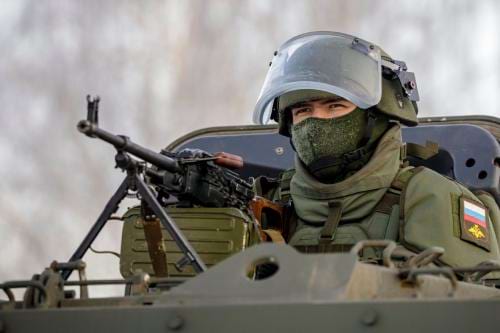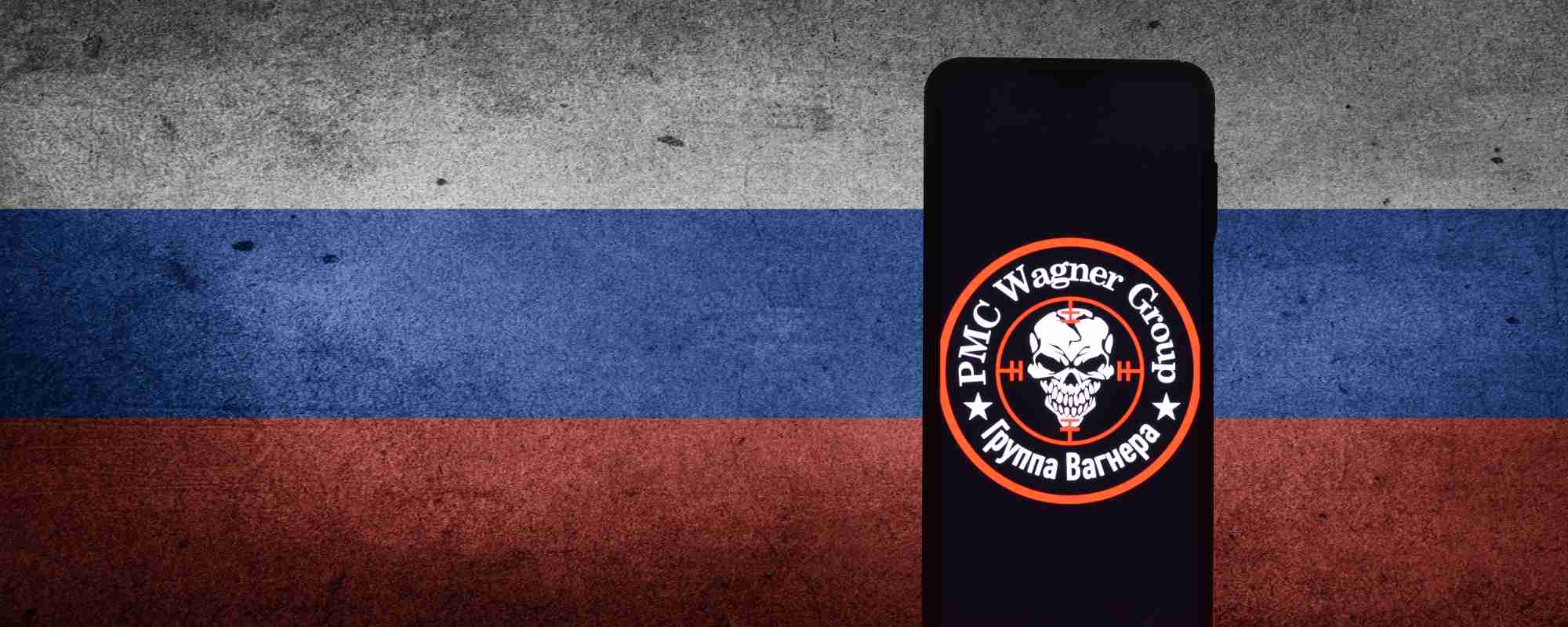Russia’s regime is conducting two wars, one to subjugate Ukraine, and another to subjugate its own military. In Part 2 of this article, Jonathan Firbank speaks with Dr Valentina Cassar about the Wagner uprising that these two wars incentivized, and about how Russia is managing the risk of this happening again. Part 1 can be found here.
Yevgeny Prigozhin, the oligarch-warlord of Wagner, who mutinied and was subsequently assassinated last year, is an ideal means of understanding Russia’s abusive relationship with its armed forces, as both a perpetrator and victim. He was an ex-convict who drove convicts to certain death, a Putin loyalist who chased Putin from the Kremlin, and, ultimately, a remorseless killer who was remorselessly killed. Dr Valentina Cassar, of UM’s Department of International Relations, states, ‘Prighozin’s attempted mutiny was significant at several levels. Before the mutiny itself, his telegram profile, increasingly public persona, and vocal depictions of developments on the frontline gave an insight into Wagner’s struggles, as well as indications of the fractured nature of Russia’s command and control.’ Prigozhin was one of the very few public voices of dissent, filming himself lamenting the needless deaths of his men in front of piles of corpses. But, yet more famously, he gleefully promoted footage of his men executing one of their own, because the returned POW had spoken too candidly to Ukrainian captors.
Prighozhin publicly condemned the Russian Ministry of Defense’s supply issues. As Cassar states, these ‘complaints about inadequate supplies and resources brought into question Russia’s ability to sustain its military objectives and withstand Ukraine’s counteroffensive.’ He specifically blamed Putin’s Chief of Staff and Minister of Defense, inadvertently setting himself against the culture of negligence within Russia’s military (and thus against Putin himself). ‘Although outside the traditional chain of command, Prigozhin’s public profile, complaints, and dissent provided a source of opposition from within and towards Russia’s regime,’ something absent ‘in mainstream Russian politics for some time.’ It isn’t fully understood whether Wagner was intentionally starved of supply. The normally well-equipped force may have been taking a more generalised problem personally. But if Prigozhin and Wagner were victimised by their superiors, it was nothing compared to the victimisation of those under their command. Wagner used its new recruits as disposable bait, burning through their newly inflated numbers. When Moscow forbade them from recruiting prisoners, Wagner’s doctrine became unsustainable, and the snake ate its own tail. Prigozhin turned against Moscow, and the rest is history.
Wagner treated its underlings as enemies, using them with punitive disregard until the practice backfired. Then, Russia treated Wagner as an enemy, punitively restraining and threatening them until that too backfired. Wagner marched uncontested towards Moscow. As Cassar recounts, ‘the mutiny appeared to be gaining support from local populations on the ground’ as well as groups of soldiers that, notably, included penal troops desperate for any change. It’signalled the regime’s declining ability to retain support and control within the military itself as well as within the broader population. The attempted mutiny was a failure, the status quo seemingly restored, and the challenges posed by Prighozin were supposedly removed by his so-called deal with the Kremlin, and eventually his death. Yet the threat or attempted challenge to the regime, be it in terms of allegiances towards the government’s military posture and support in the war effort, or as a direct challenge to the regime itself pose a source of uncertainty.’

Wagner was neutralised but, again, Moscow learned the wrong lessons from this existential debacle. The use of “meat waves” became a general practice, tens of thousands of unprepared Russians were wasted against a well-fortified Avdiika. Once Ukraine withdrew, there was no consolidation, the relentless grinding of men simply turned elsewhere. Prisoners continue to be recruited and sacrificed, and the difference between their experience and those of other recruits’ continues to shrink. Prighozhin’s mutiny was not the only one thus far and if the attempt to bribe Prighozhin with an off-ramp had failed, it may have accelerated the end of Russia’s regime. Russia’s sluggish military machine was incapable of responding swiftly to this threat. Much like the Ukrainian incursions into Belgorad Oblast, Wagner could have had free reign within Russia’s borders. Russia’s military proper may have been pulled in two directions, all the while bleeding manpower, as other victim-perpetrators abstained or defected in the face of civil war.
How Russia Hopes to Win the War Against its Own Army
Russia’s regime is perfectly aware of the danger that its military represents, directly or indirectly. In part, it is a self-fulfilling prophecy – feeling threatened by a dissatisfied military incentivises punitive, brutal policies. This, in turn, increases the dissatisfaction and threat. More cracks are appearing from the stress of this catch-22. Russia sought to destabilise Ukraine by destroying its heating infrastructure in the winter of 2022. Over the 2023’s winter, it has been Russia’s infrastructure that has failed, due to the vast amount of utility workers that have been pulled into Russia’s meat grinder. By the Kremlin’s logic, this represents an existential threat. A more tangible threat is the direct uprising of Russian civilians. Last year, this seemed only the faintest of possibilities. But 2024 has seen three insurrections in its first month. A warehouse whose immigrant workers were targeted by recruiters was burned down, amidst a rumoured riot. Military wives, a growing political block in Russia, have protested at the gates of the Kremlin, proving Cassar’s assertion that the morale of soldiers’ families is crucial. Protesters challenging the arrest of a political prisoner came out in thousands in the province of Bashkortostan. The killing of Alexei Navalny may prove a greater catalyst. Outlying events such as these have precipitated a revolution in Russia’s past.

But Russia is adapting, modifying its techniques of control to better compensate for the potential consequences. The reaction to Wagner’s mutiny provides several examples. ‘At the start of the uprising,’ continues Cassar, ‘Kotkin argued that authoritarian regimes tend to develop strong military and security services that are intentionally divided against themselves to retain control and prevent challenges.’ This policy backfired – inter-military antagonism was manageable while Russia engaged in lower-risk adventurism, but exploded under the pressure of near-total war. ‘The crisis within Russia’s military services and capabilities was in part reflected by its “outsourcing” and reliance on privatised military services, such as Wagner Group, both in Ukraine, but also well before 2022 to expand Russia’s military footprint outside of the country.’ Wagner’s separation from Moscow was useful for plausible deniability, but ultimately dangerous.
There won’t be another Wagner, flirtations with the creation of ‘mercenary’ groups with similar autonomy ceased when Wagner turned East. Instead, prisoners are brought under the direct control of the Russian military. Russian convicts and, as Cassar previously mentioned, Ukrainian PoWs, are used no less cruelly than before. For a time, once their contracts were up, Russian convicts continued to be allowed to return home, newly traumatised and primed for violent crime. Well-publicised mass murders were just a small part of a broad crime wave spreading wherever Russian veterans returned home until the Kremlin adapted once again and made prisoner conscription an indefinite sentence.
Russian veterans who aren’t convicts never had the luxury of leaving. This is because they are more likely to have a political voice. Russia does not ‘rotate’ these troops out of combat, they are kept in a state of constant war. As Cassar mentioned in the first article, this fatigue is dangerous for morale. It massively degrades their ability to fight effectively and, should they be in the worst parts of the front, condemns them to death. But this is by design. Anyone with the potential to effect change is not allowed to bring the reality of Putin’s invasion back to Russia. Those that do trickle back to the motherland are denied pay and medical treatment, and groups created to support them are coming under increasing scrutiny, lest charities for the wounded morph into critics of the regime.

The Russian regime is also careful about who is conscripted. Those in Moscow and St. Petersburg, comparatively wealthy people close to the seat of power, are largely left alone. Instead, impoverished people from provincial Russia are drafted in vast numbers. The original source of “expendable Russians” were the people of Ukraine’s East, conscripted regardless of whether they had separatist sentiments. Now those men are largely dead, Russia has begun importing ethnic minorities from the provinces or central Asia to repopulate the region. They are now more vulnerable to being plucked like flowers for Russia’s army, without disturbing those with a political voice. Auxiliary troops from Syria to Africa to Cuba are being recruited on false pretences so that those who mourn their loss do so far away from Russia. And finally, and most barbarically, the thousands of Ukrainian children kidnapped at the start of the war have had Russian citizenship applied to them. They will then pass through a newly militarised school syllabus with the intent that, eventually, they will become the most voiceless conscripts of all.
Through this wall of silence, Russia has maintained respectable rates of voluntary recruitment. This is helped along by offering absurdly high salaries and other payments, which dwarf any income a provincial Russian might hope for. Of course, as the new recruit has a lifespan measured in weeks, this money may be delayed until it no longer has to be paid at all. At first glance, Russia’s staggering death toll and brutalisation of its soldiers could only represent a threat to the regime. But the mechanisms behind this loss of life and constant punishment are in fact intended to protect the regime. As Cassar states, Russia’s regime ‘depends on political support and morale of its own citizens and military,’ and is keenly aware of this. But its only interventions are Orwellian to the point of irony. Russia’s regime employs death and suffering to protect itself from the consequences of employing death and suffering. The solution to too much death? More death. The solution to too much suffering? More suffering. Russia’s war against its own army is the ‘stamping boot’, as Orwell described it, ‘descending on a human face – forever.’





Comments are closed for this article!